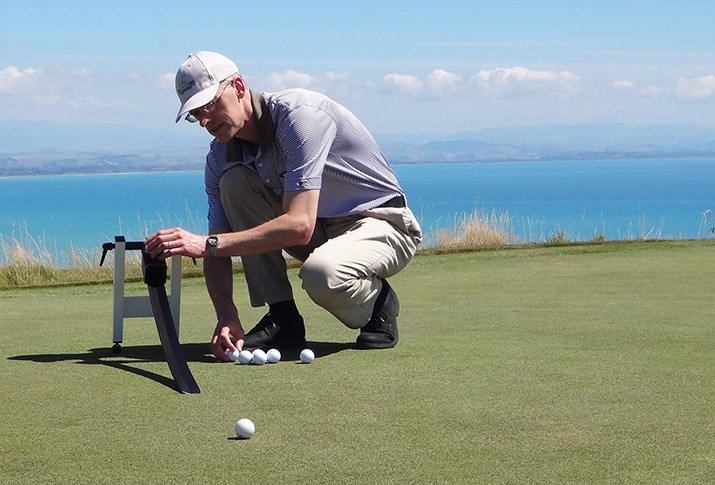Smooth sailing on the green

Credit: Delaware Valley University. Dr. Doug Linde, professor of turf management, conducts putting green research.
Dr. Doug Linde, a professor of turf management at Delaware Valley University, has been working with researchers from New Zealand to try to determine the best way to measure putting green trueness (how the turf impacts the roll of a ball on a golf course putting green). He recently co-authored a peer-reviewed paper on the findings. On July 18, Dr. Linde presented the work at the International Turfgrass Society (ITS) Conference. Dr. Linde’s research was also published in the International Turfgrass Society Research Journal in July.
The ITS is a scientific organization that was established in 1969. ITS encourages research and education in turfgrass science and promotes personal communication among the international community of turfgrass researchers. ITS organizes international conferences where turf professionals present research and information on all phases of turfgrass production and use.
Dr. Linde co-authored the paper, "Comparing three methods to measure putting green trueness" with Dr. Andrew Mitchell and Brendan Hannan, two scientists from the New Zealand Sports Turf Institute.
The research was an attempt to find an objective method that could measure how the turf impacts the roll of a golf ball on putting greens. Dr. Linde and the team from New Zealand Sports Turf Institute compared several methods for measuring trueness.
Maintaining putting green trueness is important because of golfer perceptions. Although the researchers proved that the slight wobbling or bouncing of a ball might not always determine whether or not a putted golf ball goes in the hole, golfers want to see the ball roll without bouncing or wobbling. So, it’s important for golf course superintendents to effectively measure and manage trueness.